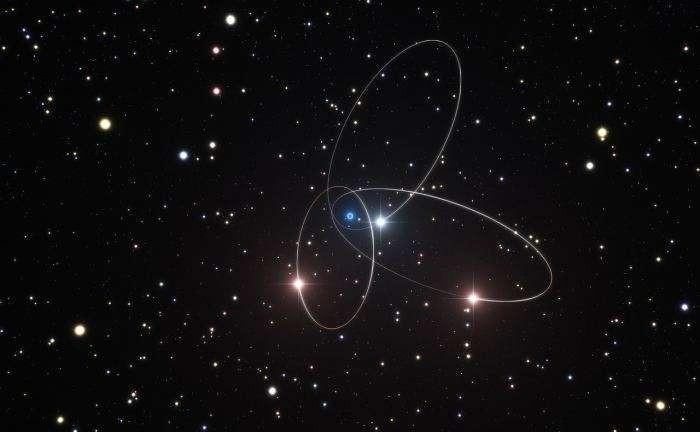Supermassive black hole 26,000 light years from us proves Einstein right
The stars orbiting the black hole behave as predicted by the general theory of relativity.
Stars orbiting the supermassive black hole Sagittarius A*, 26,000 light years away from Earth, have helped confirm once more some of the predictions made by Albert Einstein in his famous theory of general relativity.
Sagittarius A* lies at the centre of our galaxy and measures about 44 million km across. As such, it is about 4 million times as massive as our sun and exerts a tremendous gravitational pull.
Scientists cannot directly observe black holes, such as this one, so they have studied a group of nearby stars orbiting around it to detect its effects.
In a study now published in the Astrophysical Journal, astronomers measured the orbit of these stars, using new analysis techniques and existing observations that were made by European Southern Observatory's Very Large Telescope and other telescopes in the last two decades.
The data about the stars was used to test predictions made by classical Newtonian physics such as universal gravitation, as well as predictions based on general relativity.
Investigating one star
Scientists show that the star known as S2 appears to have the most elliptical orbit of any star orbiting the supermassive black hole. It is 15 times the mass of our sun and completes this orbit in about 15.6 years. At its closest, it gets to within 17 light hours of the black hole, or 120 times the distance between the Sun and the Earth.
The orbit changed slightly over time – by a few percent in the shape and about one-sixth of a degree in orientation. The theory of general relativity can help explain these changes. They are probably due to relativistic effects caused by Sagittarius A* intense gravity.

These deviations in S2's orbit were thus found to be consistent with the theory of general relativity but they cannot be explained by the principles of Newtonian physics.
These findings show once more that Einstein was right in his predictions. If they are confirmed further, this will be the first time that the effects of general relativity have been precisely measured using the stars that orbit a supermassive black hole.
Beyond the more precise information collected about S2's orbit, this study also provides new and more accurate estimates of Sagittarius A*'s mass, as well as its distance from Earth. This data is important as it could form the basis of innovative future research about the physics of supermassive black holes and more generally about the physics of gravity.
© Copyright IBTimes 2025. All rights reserved.






















